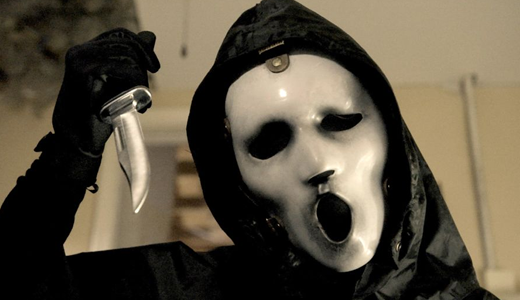Summertime TV has always been like that proverbial tree in a forest: If a show’s on but nobody watches it, does it make a sound?
For years, programmers figured that fewer people watched television in the summer. And it makes sense. The days are longer. The weather’s great. People are off playing golf or eating hot dogs or going on vacation … so many better things to do than watch TV. When I was a kid, it felt like TV took the summers off, too: Viewers were treated to a bevy of reruns and not much else. And even now, most networks are awash in short-run reality shows and little-known series that someone at the network simply hopes to burn off.
But there’s something else that has lately burbled to the surface: horror. Now the strategy seems to be that if a show screams loud enough, maybe—just maybe—people will pay attention.
This week I reviewed Dead of Summer, a terrible little show on Freeform (formerly ABC Family) wherein a quiet summer camp is haunted by ghosts and Satanic activity. I reviewed AMC’s Preacher the week before, a gross, quirky drama with mass killings, a vampire and a pastor possessed by a mysterious supernatural entity. Earlier this summer I check in on MTV’s Scream, which is … well, self-explanatory.
Even shows that don’t check the box completely have horror-like elements to them. Pretty Little Liars, again on Freeform, is centered around a mysterious masked killer with a penchant for melodramatic gothic flourishes. Wayward Pines on Fox, produced by M. Night Shyamalan, is a sci-fi thriller with a bit of a Stephen King tinge.
And while the trend is most obvious in the summer, horror is seeping into the television landscape all across the board. All you need to do is look at the success of AMC’s The Walking Dead and FX’s American Horror Story to see that.
I get the strategy. After all, television’s in a strange, frightening place itself right now.
Back in my childhood, our tiny, boxy television set could receive four networks, counting PBS. Our choices for what to watch were correspondingly limited, but we watched all the same. Today there are dozens of channels asking for our time, not to mention streaming services such as Netflix and Amazon. In 2015, these stations brought us 409 original scripted series—a jump from the 376 scripted shows aired in 2014.
That’s a lot of TV—more and, many critics would argue, better TV than ever. But all these shows are competing for fewer and fewer eyeballs. Games and social networks are siphoning off viewers, particularly younger ones—a highly sought-after demographic for television advertisers. A hit show in 2016 draws fewer viewers than a borderline bomb did in 1996. We have, essentially, a television glut on our hands.
What happens when you’ve got three convenience stations on the corner competing for the same traffic? It’s not long before the convenience stations start trotting out banners. Balloons. Those long inflatable worm-beings that flap in the breeze. I’m sure if they could get away with it, one of ’em would launch fireworks at night. Anything to draw attention.
And on television, nothing draws attention more reliably than death: the bloodier, the better. The higher the stakes are, the more peril there is, the more likely (or so the thinking goes) that someone will tune in, just to see if so-and-so escapes that spinning saw trap in the lumberyard or if what’s-her-face is the next to cash her last paycheck. As a television executive version of Wall Street’s Gordon Gecko might say, gore is good.
Except, of course, gore isn’t so great for us viewers. And there are perhaps better ways to wind down an evening than with an after-dinner scream.






Recent Comments